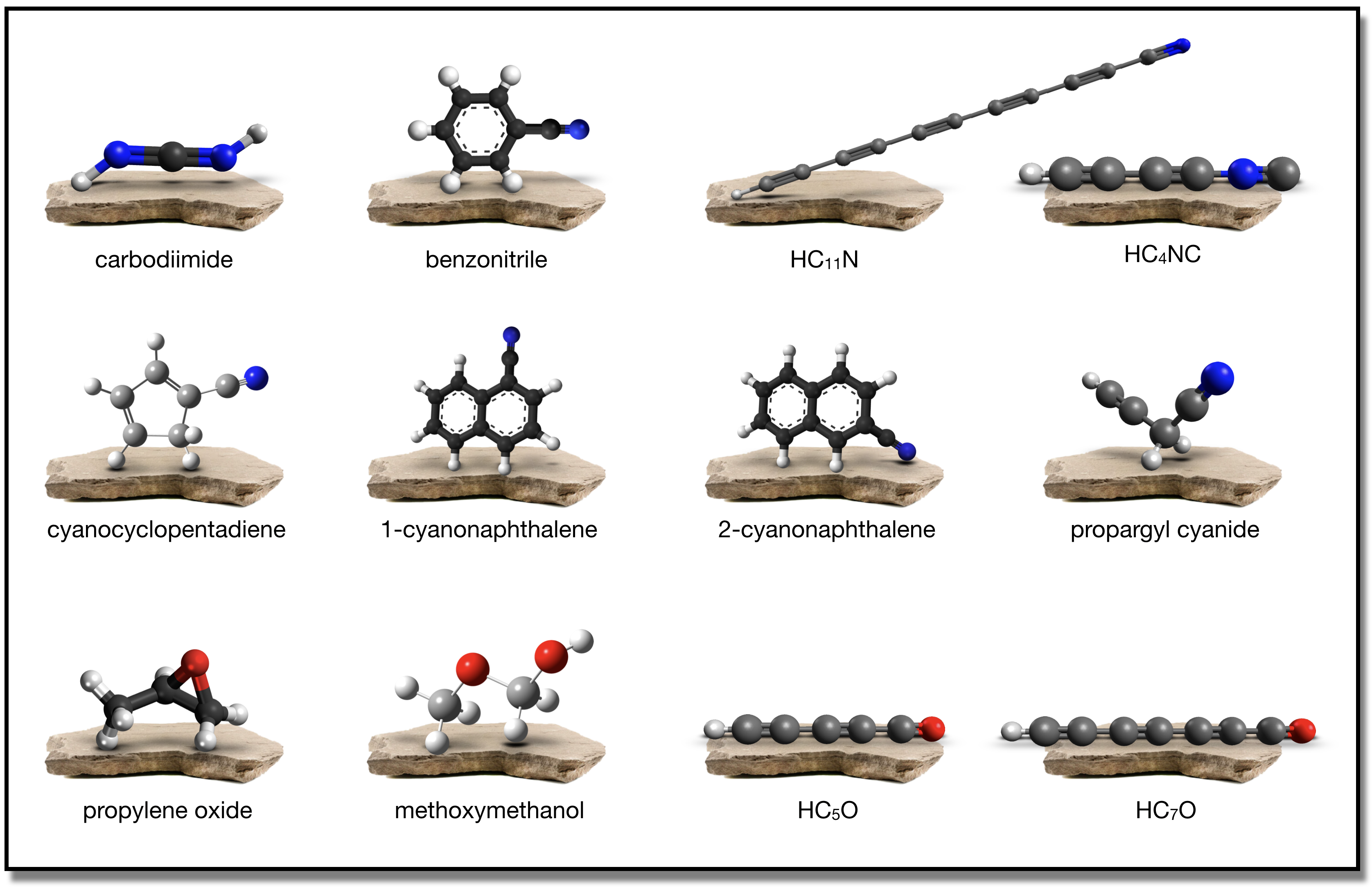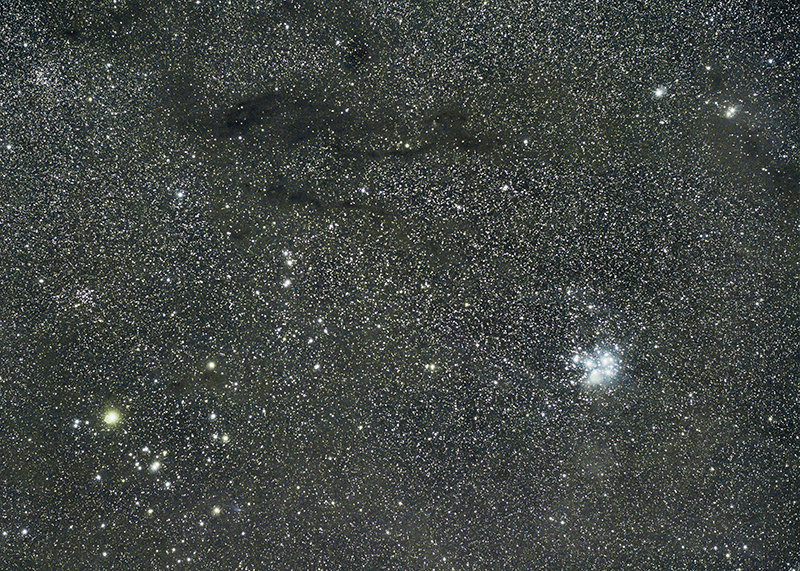New Molecular Discovery
Learning anything about our cosmic chemical heritage first requires that we understand the molecules that are present in any given environment in space. We are first and foremost a molecule hunters, using the spectra measured here on Earth to detect these species in the interstellar medium (ISM). The associated figure is a Rogue's Gallery of some of the molecules we have identified in space for the first time. Of particular note here are propylene oxide (the first chiral molecule ever detected in space) and the aromatic species, the detections of which are opening a new sub-field of astrochemistry. We are exploring this new, unexpected aromatic chemistry, how it interacts with what we believe we already know about the evolution of prebiotic chemistry in the ISM, and how it changes what we think we know about the formation of stars and planets.


